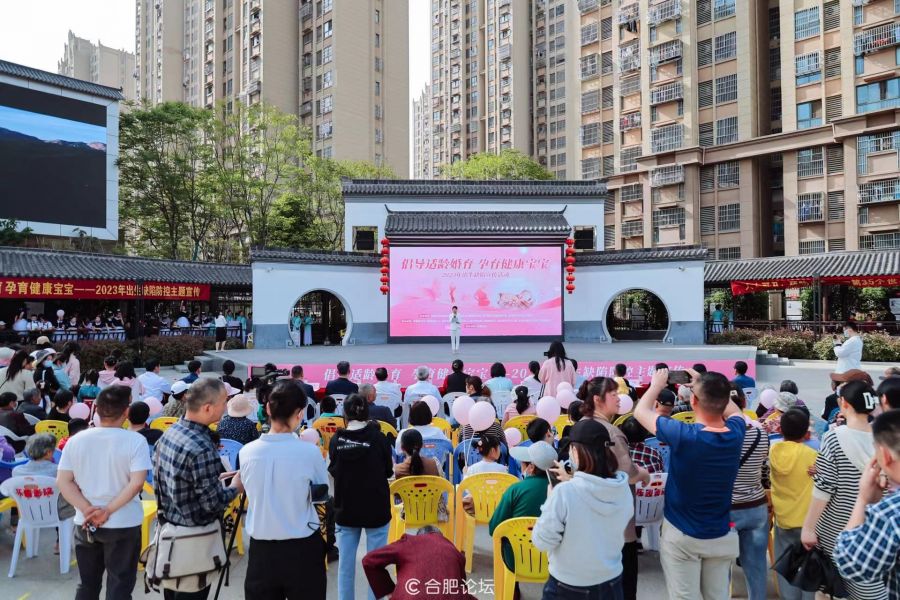US can't reverse re

Shi Yu/China Daily。
The world is watching closely as the United States and China engage in high-stakes bilateral trade negotiations. While the immediate outcomes may be modest tariff adjustments or managed market access in selected sectors, those can be best understood as tactical responses to deeper structural tensions rather than strategic breakthroughs. The broader implications for global trade lie not in the specifics of such negotiations but in the shifts they signify: away from multilateralism and US dollar hegemony, and toward a new, multipolar global trade architecture.。
At the heart of the current tensions is the US' growing anxiety over its relative decentering. Having enjoyed more than three decades of the unrivalled global hegemony since the end of the Cold War, the US now finds itself challenged by China's rising technological prowess, industrial scale and global integration. Under the Donald Trump administration, the US' anxiety has transformed into an explicitly transactional, bilateral trade posture.。
The US has been increasingly dismissing multilateral institutions — for long the instruments through which Washington shaped global norms and gained geopolitical advantage — in favor of "deal-making" with individual countries, and projected this bilateralism, steeped in zero-sum logic, as strength. By doing so, it has exposed its strategic incoherence.。
For example, through its trade policy, the US administration tried to simultaneously increase domestic manufacturing output — by penalizing imports — and maintain the dollar's status as the global reserve currency. These goals are not easily reconciled. A strong global reserve currency fuels persistent trade deficits. Penalizing imports through tariffs does disrupt this dynamic but not without costs. If the US were to genuinely reindustrialize at scale, it would need to import huge volumes of capital goods and intermediate inputs, exacerbating the very trade deficit it seeks to narrow. The paradox is that narrowing the trade deficit would first require widening it.。
The alternative is simply to reduce overall aggregate demand in the economy by slashing public expenditure. That doesn't look like happening.。
More fundamentally, the hollowing out of US manufacturing was never principally a result of trade agreements. It was a symptom of a deeper reorientation of US capital. Over the past four decades, US capital has been progressively reallocated from industrial production to financial engineering, creating asset bubbles, stock buybacks and speculative real estate investment. Wall Street flourished as "Main Street" faded. The share of GDP derived from financial services soared, while fixed capital formation in manufacturing stagnated. Reversing this trend would require reducing the political and institutional power of finance, an unpalatable proposition for any administration.。
Yet the US still manufactures products such as high-end equipment and advanced electronics, and develops or advances technologies like aerospace technology and military technology. But their production is capital-intensive, not labor-intensive, and they don't fill the physical or emotional void created by the offshoring of everyday consumer goods manufacturing that began in the 1970s. The sense of economic alienation among broad swathes of the American working class is as much cultural as it is economic. Tariffs may meet some symbolic need for control or retribution, but they cannot restore the industrial base to its past state.。
Also, the rest of the world is adapting to the US' contradictions. The weaponization of the dollar, through sanctions and arbitrary financial restrictions, has catalyzed a slow but deliberate move toward alternatives. Some emerging economies are accelerating trade settlements in their national currencies and exploring alternative clearing mechanisms. ASEAN member states, on the other hand, are reducing their reliance on the dollar in regional trade, particularly with China, Japan and the Republic of Korea.。
Even the oil-rich Gulf Cooperation Council member states are diversifying their trade currency strategies. The demand for the dollar as a trade settlement medium is gradually diminishing, which the European Central Bank sees as an opportunity for the euro to play a more prominent role in global trade. This fragmentation is not a retreat from but a reconfiguration of globalization.。
The new globalization that is emerging is multipolar in character, regional in structure and decentralized in operations. Institutions such as the World Trade Organization will likely persist, offering an overarching framework for administrative and policy guidance. But much of the practical work of trade governance — harmonization of standards, digital commerce rules and investment arbitration — will occur in regional and bilateral forums. In this regard, the US-China negotiations are not anomalous but emblematic.。
For many countries, especially in the Global South, the US' retreat from multilateralism poses risks but also creates new space. The growing importance of South-South trade, supported by new infrastructure financing and currency swap arrangements, is reducing the Global South's dependence on Western markets and institutions, with the Belt and Road Initiative creating corridors of trade and production that bypass traditional Western trade bottlenecks.。
The US remains a major consumer market, responsible for about 14 percent of global imports. But its share in the global economy is declining, reflecting both its waning economic clout and the diversification of global demand. For exporters, aligning with the new regional poles of growth — in East Asia, South Asia and parts of Africa — will become increasingly important. And supply chains will be restructured to hedge against geopolitical volatility, balancing proximity, cost and political risk.。
The Sino-US trade tango should not be seen as the primary determinant of the future of global trade. Rather, it is a mirror of the broader historical shift: from unipolarism to multipolarism, from dollar dominance to currency diversification, from multilateralism to mosaic regionalism. The world isn't de-globalizing; it is re-globalizing on new terms and under new rules.。
The author is an adviser to former Australian prime minister Kevin Rudd, adjunct professor at Queensland University of Technology and a senior research fellow at Taihe Institute.。
The views don't necessarily reflect those of China Daily.。
(责任编辑:休闲)
-
 为进一步优化营商环境,切实增强企业职工的安全防备认识和自我维护才能。6月10日,方庙派出所经验丰富的社区民警杨传斌活跃响应服务企业、护航展开的召唤,带着满满的诚心与有用的安全常识,深化辖区多家企业,展
...[详细]
为进一步优化营商环境,切实增强企业职工的安全防备认识和自我维护才能。6月10日,方庙派出所经验丰富的社区民警杨传斌活跃响应服务企业、护航展开的召唤,带着满满的诚心与有用的安全常识,深化辖区多家企业,展
...[详细]
-
 "We look forward to collaborating with China, collaborating with any city."。South African officials
...[详细]
"We look forward to collaborating with China, collaborating with any city."。South African officials
...[详细]
-
 新华社北京5月24日电 《我国证券报》24日刊发文章《端午假日周边游预定炽热 文旅交融激起消费生机》。文章称,2025年端午假日接近,游览消费预定状况出现“周边深度游+文旅新体会”两层特征。多家在线游
...[详细]
新华社北京5月24日电 《我国证券报》24日刊发文章《端午假日周边游预定炽热 文旅交融激起消费生机》。文章称,2025年端午假日接近,游览消费预定状况出现“周边深度游+文旅新体会”两层特征。多家在线游
...[详细]
-
 距2025年高考还有半个月左右的时刻,跟着高考接近,模仿押题卷商场热度居高不下。眼下,名师和AI猜测押题齐上阵……他们真的靠谱吗?AI“押题”真的能成备考“神器”?眼下,考生和家长严重备考的一起,“高
...[详细]
距2025年高考还有半个月左右的时刻,跟着高考接近,模仿押题卷商场热度居高不下。眼下,名师和AI猜测押题齐上阵……他们真的靠谱吗?AI“押题”真的能成备考“神器”?眼下,考生和家长严重备考的一起,“高
...[详细]
-
 在“7.8全国稳妥大众宣扬日”到来之际,为提高大众危险保证认识,2025年7月8日,泰康人寿六安中支走进当地企业,经过面对面沟通、互动答疑等方式,积极展开“稳妥常识进企业”活动,向企业职工遍及金融稳妥
...[详细]
在“7.8全国稳妥大众宣扬日”到来之际,为提高大众危险保证认识,2025年7月8日,泰康人寿六安中支走进当地企业,经过面对面沟通、互动答疑等方式,积极展开“稳妥常识进企业”活动,向企业职工遍及金融稳妥
...[详细]
-
 央视网音讯:最近,一批新式的退休沙龙正在交际媒体引发重视。许多退休人士表明,在这里找回了年青的感觉。那么,这些沙龙有哪些吸引人的当地呢? 从卡丁车到爵士舞 退休沙龙玩出“年青态”。极致的速度感、轰鸣的
...[详细]
央视网音讯:最近,一批新式的退休沙龙正在交际媒体引发重视。许多退休人士表明,在这里找回了年青的感觉。那么,这些沙龙有哪些吸引人的当地呢? 从卡丁车到爵士舞 退休沙龙玩出“年青态”。极致的速度感、轰鸣的
...[详细]
-
 央视网音讯。:记者5月23日从国家医保局得悉,为推进新产品、新技能快速进入临床使用,到现在,国家医保局已发布28批医疗服务价格立项攻略,其间,新增触及新产品的价格项目达100多项。国家医保局价格招采司
...[详细]
央视网音讯。:记者5月23日从国家医保局得悉,为推进新产品、新技能快速进入临床使用,到现在,国家医保局已发布28批医疗服务价格立项攻略,其间,新增触及新产品的价格项目达100多项。国家医保局价格招采司
...[详细]
-
 又到一年荔枝季,岭南大地处处飘散着甜美滋味。广东茂名被称为“我国荔乡”,是国际最大的荔枝连片出产基地,栽培荔枝现已有超越2000年的前史,全市荔枝栽培面积140多万亩,产值约占全国的四分之一,全球每五
...[详细]
又到一年荔枝季,岭南大地处处飘散着甜美滋味。广东茂名被称为“我国荔乡”,是国际最大的荔枝连片出产基地,栽培荔枝现已有超越2000年的前史,全市荔枝栽培面积140多万亩,产值约占全国的四分之一,全球每五
...[详细]
-
 最近,跟着气温上升,我国北方多地进入了柳树飞絮期,漫天飞絮如雪。这些飞絮是怎样发生的?对咱们的日常日子有哪些影响?在北京中心城区,漫天飞絮如雪。为此,北京市园林绿化局于近来发布了本年首个柳树飞絮预告。
...[详细]
最近,跟着气温上升,我国北方多地进入了柳树飞絮期,漫天飞絮如雪。这些飞絮是怎样发生的?对咱们的日常日子有哪些影响?在北京中心城区,漫天飞絮如雪。为此,北京市园林绿化局于近来发布了本年首个柳树飞絮预告。
...[详细]
-
 模特身着品牌潮服,踩着动感节拍,一场时装秀,引来上百名观众。“太特别了!谁能想到这儿不是秀场而是动物园!”来自江苏姑苏的游客杨婕慨叹。江苏省南京市红山森林动物园,如今是全国闻名的“网红打卡地”,上一年
...[详细]
模特身着品牌潮服,踩着动感节拍,一场时装秀,引来上百名观众。“太特别了!谁能想到这儿不是秀场而是动物园!”来自江苏姑苏的游客杨婕慨叹。江苏省南京市红山森林动物园,如今是全国闻名的“网红打卡地”,上一年
...[详细]

 比亚迪助力中国民间青训安排“中国足球小将”
比亚迪助力中国民间青训安排“中国足球小将” 工商银行马鞍山联合广场支行展开4•15全民国家安全教育日 宣扬活动
工商银行马鞍山联合广场支行展开4•15全民国家安全教育日 宣扬活动 全国跳水冠军赛:陈芋汐断崖式抢先晋级女子十米台半决赛
全国跳水冠军赛:陈芋汐断崖式抢先晋级女子十米台半决赛 “倡议适龄婚育 孕育健康宝宝” 2023年出世缺点主题宣扬活动
“倡议适龄婚育 孕育健康宝宝” 2023年出世缺点主题宣扬活动 全新身份定位,破局老龄化年代新需求——安全人寿推出稳妥康养参谋招募宣传片《浪潮》
全新身份定位,破局老龄化年代新需求——安全人寿推出稳妥康养参谋招募宣传片《浪潮》
